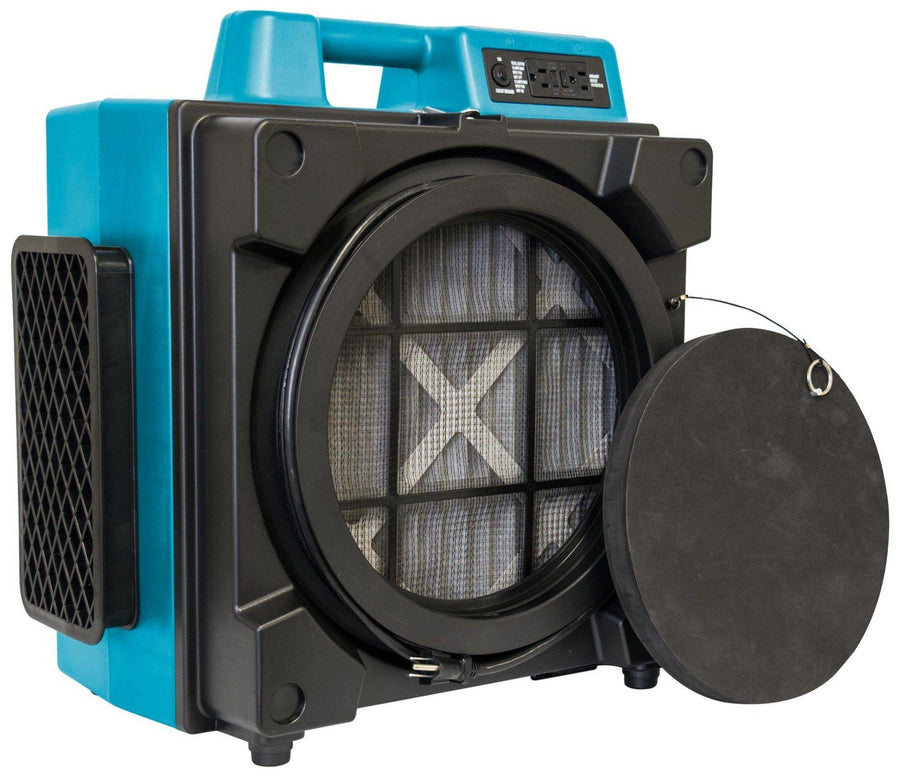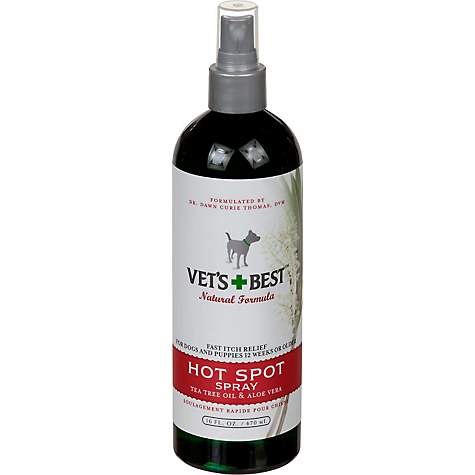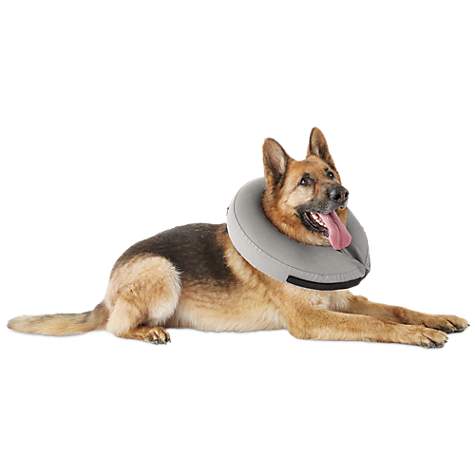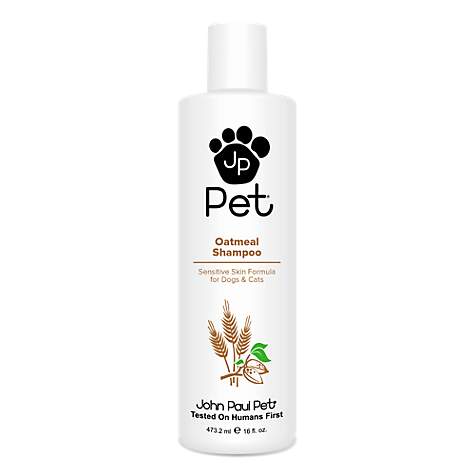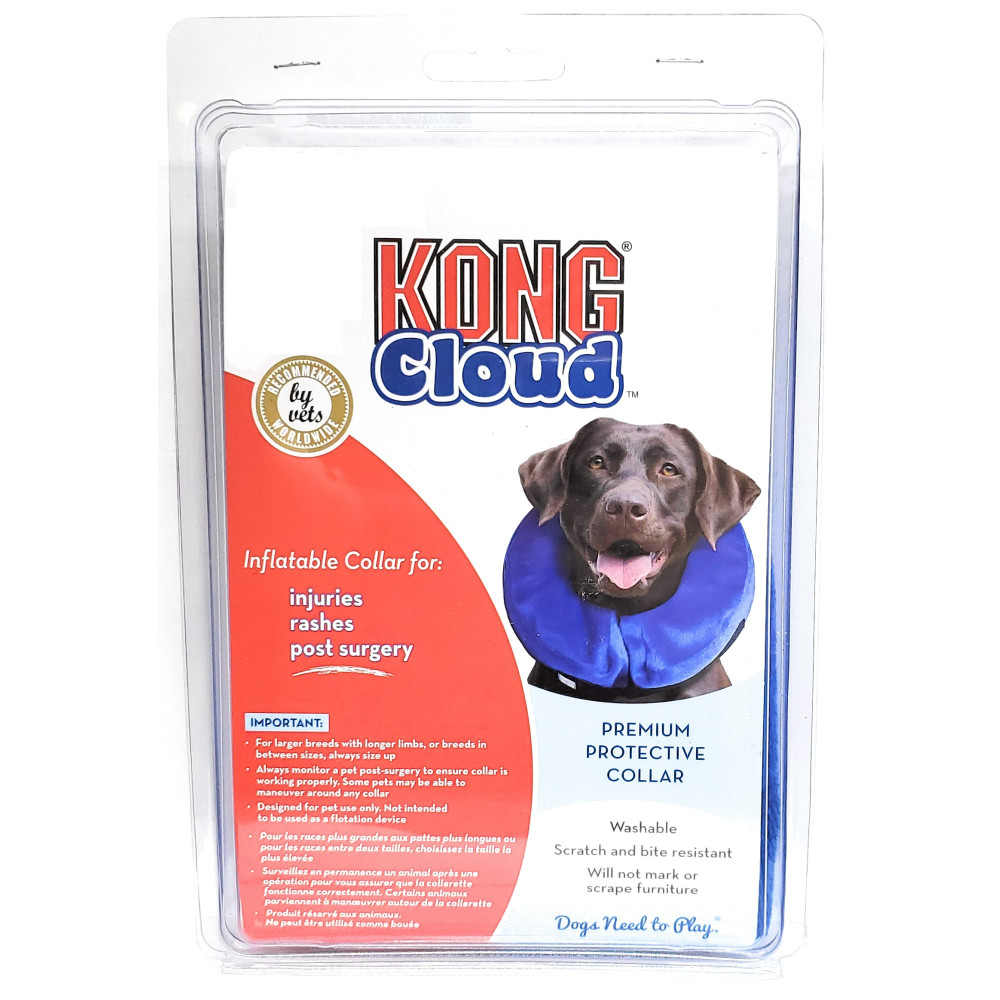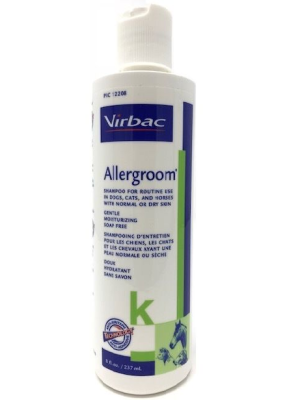Allergies and Malamutes
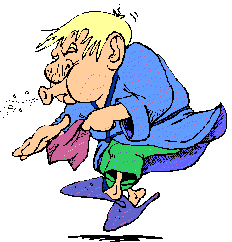
For those of us who suffer from allergies to Malamutes, being cooped up at home with our dogs, cats, and birds can mean increased misery. The American Lung Association has several tips which may offer much needed relief to people who suffer from allergies to dander and other Malamute allergens: Keep Malamutes out of the bedroom (like I can tell Holly she can't sleep in HER room...). Many hours are spent in the bedroom sleeping, so this will reduce your exposure to allergens, but there are also other things that help.
Groom your dog daily and bathe him as often as possible. AllerMalamute is a product that some people have found useful. Doing so will help remove a lot of the dander that accumulates on a Malamute's fur. Some dogs seem to have more dander than others - for instance, Homer created a lot of "dust" whereas Shadow and Penny did not. I suspect it's the quality of the oils in the coat and is "litter specific" - in other words, you may find one puppy is more of a problem than another. If combed daily, Homer was not quite so "dusty" so distribution of the oils in the coat can be helpful if dander is your problem. If you can't keep your Malamute off upholstered furniture like a couch or love seat, cover furniture with removable, washable slipcovers - which is only practical anyway with Malamutes. Wash walls and floors periodically. Have a nonallergic family member brush your Malamute outdoors on a regular basis. If you live in a cold climate, brush in a room the allergic family member doesn't frequent often and vacumn and dust afterwards. If a nonallergic family member can't do it (this is for you Moms...) wear one of those paper masks - it helps. Daily brushing removes loose hair and reduces the amount of allergens float through the air indoors. Vacuum frequently - twice a day isn't too often with two dogs and allergic family members. Consider using a vacuum cleaner with a high efficiency filtration system that traps pollens and dander, such as a hepa filtered vacumn. For awhile we used a shop vac in the mistaken notion it would suck up more dust - but shop vac's actually throw more dust into the air than most regular vacuums, so my allergies got worse. Installing a central vacuum system if your home has a chronic dust problem is supposed to be good too. Take particular care to wash your hands after handling your Malamute, and wear a facemask when blow drying or brushing, maybe even goggles to keep dander out of eyes. Keep your home well-ventilated. Ventilation provides a fresh source of outdoor air and will help dilute Malamute allergens. Use high efficiency air filters (such as hepa filters) in your home's central heating and air conditioning systems and replace them often. Stand alone air filters can help too. Hepa and special allergen filters are more effective than standard fiberglass filters in capturing Malamute dander and other allergens.
For us who experience allergic reactions to our Malamutes, understanding why the body's immune system causes the sneezing, watery eyes, and itching is helpful. Some people are genetically predisposed to develop allergies and asthma. The tendency to develop allergies are inherited from parents. Antibodies are made that bind to mast cells in the airway. When the right stimulus comes along (what scientists call an antigen, or more specifically, an allergen), it binds to the antibody, telling the mast cell to dump its contents, causing an asthmatic attack, runny nose, itchy eyes. Something similar happens with the skin of some individuals, producing redness and itching or hives. Why a person can acquire a new Malamute and not experience any of these symptoms until much later is due to the time required to produce these antibodies. It can take anywhere from three weeks to three years for the body to build up enough of the exact same antibody so that an allergen can cross-link two identical antigens. This cross-linkage is the signal to mast cells to spill their contents. The good news is that some people can develop a lack of reactivity to the allergen following continued exposure, or through allergen immunotherapy (desensitization). I have to only guess it's because I've always had dogs that I can be around them - I'm not so lucky with cats.
 People are not allergic to their Malamute itself,
but to the by-products of their Malamute. These include dander, hair or skin proteins,
fur, saliva, blood, and even urine from rodents. A person is not necessarily
allergic to all of the above - one person may be sensitive to saliva while another
may be more bothered by dander, and some may be allergic to multiple antigens.
In order to determine what exactly a person is allergic to, see an allergy specialist.
An allergist will perform prick, scratch, or intradermal skin tests that examine
reactivity to as many as 70-80 possible allergens. Once the person knows what
he or she is allergic to, a specific plan of action can prevent the need to
get rid of a Malamute, if the Malamute is indeed the cause of the reaction. If fur dander
is the allergen, then certain breeds such as Poodle, Chihuahua, Portguese Water
dog, Bichon Frise may be more helpful since they produce less dander - but if
the person is allergic to saliva - that won't help at all. Dander is a common
culprit in allergies to dogs. Dogs can be bathed up to twice weekly to try to
alleviate the excessive dander production, but this isn't always practical with
a Malamute - fortunately, antedotal evidence seems to show many people are less
bothered by the northern breeds. No one is really sure why, whether it's because
an indoor Malamute tends to stay cleaner or because of a specific quality of
the coat is not known. If you do bathe your Malamute often, be sure to use a
medicated Malamute shampoo prescribed by a veterinarian, and not an inexpensive alternative
which can dry out your Malamute's skin and increase dander. If these activities are
impossible because of allergic discomfort, hire a professional to do the tasks
for you - a bath and combing at the groomers can be well worth the money if
you're not miserable afterward. Oatmeal shampoo can be used if the dog's skin dries
out or is itchy. Fatty acid supplements, zinc and Omega 3 fish oils added to the Malamute's
food may also be helpful in correcting a dry skin problem. Consult your veterinarian
about possible fatty acid or zinc supplements for your Malamute. Some dogs have problems
with excessive hair loss (not to be confused with blowing coat), excessive dander
production, or oozing areas of the skin (exposing the dog's blood, another potential
allergen) so owners need to get the condition checked out before any program
to decrease allergens .
People are not allergic to their Malamute itself,
but to the by-products of their Malamute. These include dander, hair or skin proteins,
fur, saliva, blood, and even urine from rodents. A person is not necessarily
allergic to all of the above - one person may be sensitive to saliva while another
may be more bothered by dander, and some may be allergic to multiple antigens.
In order to determine what exactly a person is allergic to, see an allergy specialist.
An allergist will perform prick, scratch, or intradermal skin tests that examine
reactivity to as many as 70-80 possible allergens. Once the person knows what
he or she is allergic to, a specific plan of action can prevent the need to
get rid of a Malamute, if the Malamute is indeed the cause of the reaction. If fur dander
is the allergen, then certain breeds such as Poodle, Chihuahua, Portguese Water
dog, Bichon Frise may be more helpful since they produce less dander - but if
the person is allergic to saliva - that won't help at all. Dander is a common
culprit in allergies to dogs. Dogs can be bathed up to twice weekly to try to
alleviate the excessive dander production, but this isn't always practical with
a Malamute - fortunately, antedotal evidence seems to show many people are less
bothered by the northern breeds. No one is really sure why, whether it's because
an indoor Malamute tends to stay cleaner or because of a specific quality of
the coat is not known. If you do bathe your Malamute often, be sure to use a
medicated Malamute shampoo prescribed by a veterinarian, and not an inexpensive alternative
which can dry out your Malamute's skin and increase dander. If these activities are
impossible because of allergic discomfort, hire a professional to do the tasks
for you - a bath and combing at the groomers can be well worth the money if
you're not miserable afterward. Oatmeal shampoo can be used if the dog's skin dries
out or is itchy. Fatty acid supplements, zinc and Omega 3 fish oils added to the Malamute's
food may also be helpful in correcting a dry skin problem. Consult your veterinarian
about possible fatty acid or zinc supplements for your Malamute. Some dogs have problems
with excessive hair loss (not to be confused with blowing coat), excessive dander
production, or oozing areas of the skin (exposing the dog's blood, another potential
allergen) so owners need to get the condition checked out before any program
to decrease allergens .

Cats present a unique situation. Being the conscientious groomers that they are, their fur is often covered with saliva, and this can produce allergic symptoms in people as well who may not be bothered by dander. Other potential sources of allergic stimuli are feathers, scales, molds, pollens, tobacco smoke, perfumes, carpet fibers, and housedust mites. Many people are allergic to more than one thing. Using air cleaners or filters may be helpful, but the more things in your environment you can get rid of, the more comfortable you will be even with a Malamute allergy. Most people have a "trigger" level and if you can keep exposure to allergens below that level they become much more manageable. Over 15% of all Americans experience symptoms ranging from itchy eyes to sneezing and wheezing when exposed to household Malamutes. Allergy-prone animal lovers can reduce their misery by modifying their own behavior. Doctors always recommend getting rid of the Malamute - but I know if you're anything like me you'll just get rid of that doctor! So find someone that can prescribe you medicine to help, possibly desensitizing shots, and keep your Malamutes meticulously clean. Teach dogs that "kisses" for the allergic person are not acceptable. I prefer to avoid kisses since with many kisses, I get hives! A dog can learn each persons' preferences if you are consistent in teaching.
The best thing you can do is keep as many allergens as possible out of the places you spend most of your time. Although people can be allergic to the saliva or fur of household Malamutes, most allergy suffering is caused by old skin cells (or dander) that rub off the animals and become airborne, eventually finding their way into the mucous membrane of an unsuspecting allergy sufferer. Keep dogs off beds, and place filters over bedroom vents to keep dander from circulating through the house though the heating/cooling vents. Vacuum, vacuum, vacuum (with a mask if your allergies are severe). Steam-cleaning carpets can be helpful in reducing many types of airborne allergens, including animal dander. Better yet, get rid of carpets - they are dirt catchers anyway and a wood or high-quality tile floor with washable throw rugs can look just as nice and can be kept cleaner. If you're buying a new house, avoid forced air heat as it just spreads the dander though the house. Radiant heat is cleaner and better for allergies. There are hypoallergenic products that can be sprayed on the fur of Malamutes that also help. One I like is AllerMalamute - used in conjunction with other dander/saliva lessening methods - it helps. There is a myth among those who want Malamutes, but who are also allergic to them, that there are several breeds of dogs and cats that are hypoallergenic. There is no such animal. There are no breeds of cats or dogs that are hypoallergenic; however, some animals can be less reactive for some people than others - unfortunately you don't always know until you get the Malamute home and fall in love.
All puppies and kittens have soft, supple skins. At this early age, an allergic person can probably handle any of them and not have much, if any, of a reaction. It is as the skin ages and becomes less supple and the sebaceous glands begin to produce more oils (sebum) allergy problems begin to appear. Most information relating to animal allergies talks only about dander. Dander is important as a problem causing allergen, but it is not the key one. Dander is usually a simplistic explanation of the cause of animal allergies. Dander may be part of the cause of reactions to cats, but the real culprit and cause of the major reactions is from the secretion of the sebaceous glands. All skin, human or animal, contains these glands which produce an oily lubricant that keep the skin supple and the hair shiny. It is from this secretion that Fel d1, the cat allergen, surfaces. (It also comes from the persistent licking of cats). The protein composition of dander can, and does cause reactions, but probably 80% of the serious reactions stem from the Fel d1 allergen whether there is lots, little or no hair. The amount of hair that a cat has or does not have plays no significant part in its allergenicity. Cats are probably responsible for two-thirds of all Malamute related allergies, not dogs.
Most dogs are not meticulous self-cleaners
to the extent that cats are. The amount of hair a dog has or does not have,
or whether the hair sheds or does not shed, plays no part in its ability to
cause allergic reactions. This is good news for Malamute owners! (While a
weekly bath would be helpful, it may not be practical since it must be dried
so thoroughly to prevent hotspots). A common misconception is that the fur
of some breeds is like human hair, and thus these breeds do not cause reactions.
Not true. However, a person can be severely allergic to cats but only mildly
allergic to dogs or rodents because of the type of allergens they produce,
or visa versa. In that case, it's much better to choose a type of Malamute based
on your level of comfort - why make yourself unnecessarily miserable?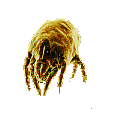
Also, maybe it isn't the dog! House dust mites are a particularly common microscopic organism which thrives in areas of high humidity in most of the United States. Cockroach allergen exposure is very common among asthma patients who live in the inner cities. Indoor fungi (molds) are prominent in humid environments. Outdoor allergens, particularly pollens from grass, weeds and trees; exposure and symptoms may be seasonal. Irritants- Smoke from tobacco or wood burning stoves and fireplaces. Indoor/outdoor pollutants/chemicals including household sprays, volatile organic compounds such as polishes, cooking oils, and industrial and photochemical smog. Other factors include Rhinitis/sinusitis, and nasal polyps. Topical and systemic beta-blockers. Viral respiratory infections; the bronchial epithelial damage and airway inflammation caused by viral infections can worsen asthma symptoms. Exercise. Exposure of asthma patients to irritants or allergens to which they are sensitive has been shown to increase asthma symptoms and precipitate asthma exacerbations.
Malamutes may only be a small part of the problem. Therefore, one of the first steps in asthma management is obtaining a careful history to identify possible triggers. Asthma triggers may vary over time, and a patient may have multiple triggers, the most common asthma triggers vary according to age. In children under 2, the most common cause of an acute asthma is a viral respiratory infection. In older children, allergens become increasingly more important as an asthma trigger, although viral infections are still a common cause. In teenagers, allergen exposure becomes the predominant cause, while in the elderly, viral infections are the most common cause.
While certain foods may cause anaphylactic symptoms in sensitive patients, food allergy is not a common cause of asthma symptoms. Certain food additives and preservatives may be, such as sulfites, but a careful history will usually identify triggers.
Although invisible to the naked eye, dust mites are commonly found in mattresses, blankets, rugs, stuffed toys and fabric-covered furniture. Your bed is the most important source of dust mites. Bed linens and blankets should be washed weekly in hot water. Mattresses and pillows should be encased in airtight Allergy Free Mattress Cover or the pillow should be washed weekly. Hypoallergenic Pillows can be helpful too. Vacuuming carpets often is essential. Patients sensitive to components of house dust should avoid conventional vacuum cleaners and should stay out of rooms during and after vacuuming. The use of a mask during vacuuming may prevent exposure. Reduce indoor humidity to less than 50% (this will reduce house dust mites population). Humidifiers and swamp coolers are not recommended for use in an asthmatic's house. Use of a dehumidifier is recommended in areas where the outside air remains humid for most of the year. Remove carpets from the bedroom. Avoid sleeping or lying on upholstered furniture. Remove from the home carpets that are laid on concrete. In children's beds, remove minimize the number of stuffed toys and wash the toys weekly in hot water. Poison baits, boric acid and traps are preferred to pesticide sprays since they are airborne and may be irritating. If pesticide sprays are used, the patient with asthma should be removed from the home during spraying and the home opened to fresh air before the patient returns.
Therefore, many things BESIDES the dog can cause allergies. It's easy to blame the dog, but the dog may not be the most serious cause of problems. There is no such thing as a hypoallergenic dog! Some just have more allergens in their fur - saliva, dander, dust, pollen. It pays to investigate before giving up a beloved Malamute. An occasional stuffy nose is a small price to pay for the companionship of a devoted Malamute basically, in most cases if you want to make it work you can. Only in rare cases should you have to part with your best friend.

